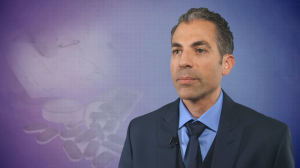NEW YORK (Reuters Health) – Giving high-flow oxygen therapy for 15 minutes to emergency department patients with headaches provides rapid relief and reduces hospital stays, use of CT scans, and headache pharmacotherapy, according to a pilot study.
Dr. Boris Veysman of the University of Medicine and Dentistry of New Jersey-Robert Wood Johnson Medical School reported the results on Monday at the annual meeting of the American College of Emergency Physicians in Boston.
“Very often, when a patient comes to the emergency department with one complaint being headache, they’re uncomfortable and symptomatic and they have to wait for a workup before anyone can determine the cause. A diagnosis may not even be made in the emergency department,” Dr. Veysman told Reuters Health. “So we approached it from a different perspective and asked, ‘What if therapy were the first thing you did (for a headache) before attempting to find a cause?’ And so we tried giving oxygen therapy, because it’s so widespread and safe.”
In the placebo-controlled study, 17 patients were randomized to 100% oxygen at 15 L/min for 15 minutes; 14 received high flow air for 15 minutes; and 17 received no intervention prior to standard treatment. Headache intensity was assessed using a 10-point visual analog scale.
Median times to relief were significantly shorter for patients treated with oxygen (40 minutes) compared with those treated with high flow air (110 minutes) or nothing (120 minutes). Median length of stay was also significantly shorter for patients treated with oxygen (57.5 minutes) than for those treated with air (210 minutes) or nothing (180 minutes).
In addition, CT scans were ordered less frequently: for four of 17 patients (24%) who received oxygen; 11 of 14 (79%) who received air; and eight of 17 (47%) who got nothing.
Medication was given to 29% of those who received oxygen, 86% of those who received air, and 82% of those who received no treatment.
Headache intensity was significantly reduced at both 15 minutes and 30 minutes after initiation of treatment, with patients treated with oxygen realizing the greatest reductions.
“It was a small study, and our results are preliminary,” Dr. Veysman stressed. “But the medical community is starting to recognize that it’s important to treat discomfort even when you don’t know what’s causing it, as long as you feel confident the treatment won’t make the patient worse. In this case, we found more relief with oxygen than with placebo, although the fact that the headache goes away doesn’t necessarily mean the patient can go home.”




